WALLACE CONNECTIONS: LOUDOUN HILL SCOTLAND |
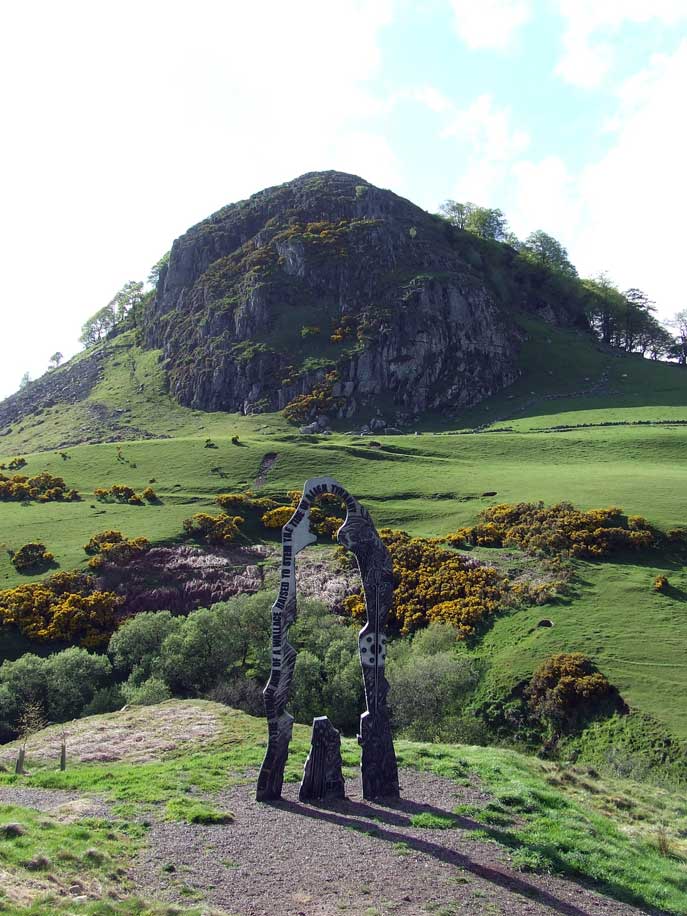 |
Loudoun Hill marks the eastern end of the Irvine Valley. From its summit there is an extensive view over Ayrshire to the Firth of Clyde and Arran. The hill has witnessed the passage of history from the earliest times. An iron-age homestead is located at the foot of the south-east slope. Nearby at Allanton Beg a Roman fort was built. The current A71 is probably the line of the Roman road as it left the fort. Sir William Wallace defeated an English force at Loudoun Hill in 1296 and King Robert the Bruce inflicted greater punishment on the English in 1307. A large Conventicle (outdoor religious service) held in the vicinity in 1679 led on to the humiliation of Claverhouse by the Covenanters at the battle of Drumclog. The actual battlesite was probably at the eastern entrance to the narrow pass known as the Winny Wizzen, it's strategic position at the head of the valley meant it was often passed by armies making their way inland or out to the coast. Wallace concealed his men behind the banks and ditches of the long abandoned Roman fort. The poem tells how the Scots made the way even narrower with the construction of stone dykes, making more effective the attack on the tightly packed riders. |
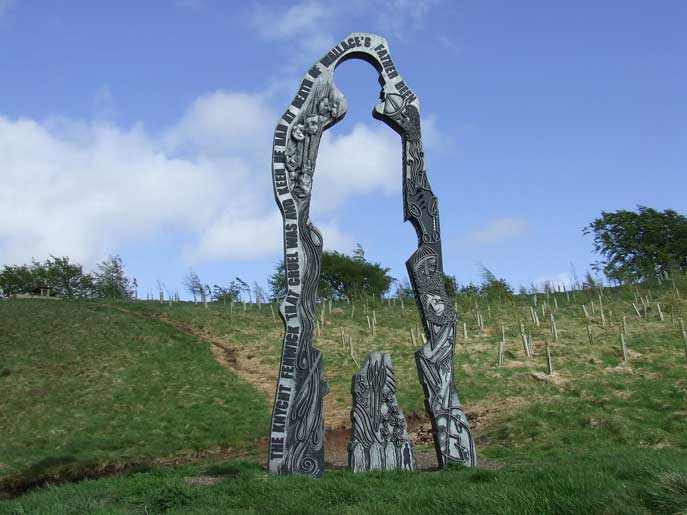 |
It really is a magnificent and intricate monument to Wallace |
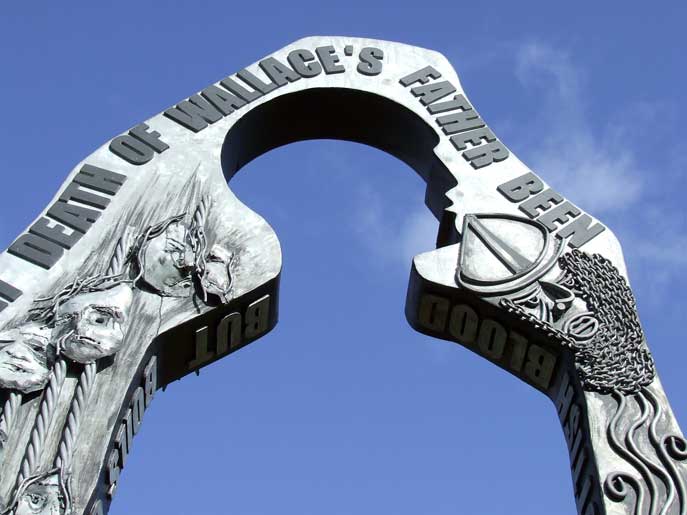 |
A modern monument, too modern for some but I like it |
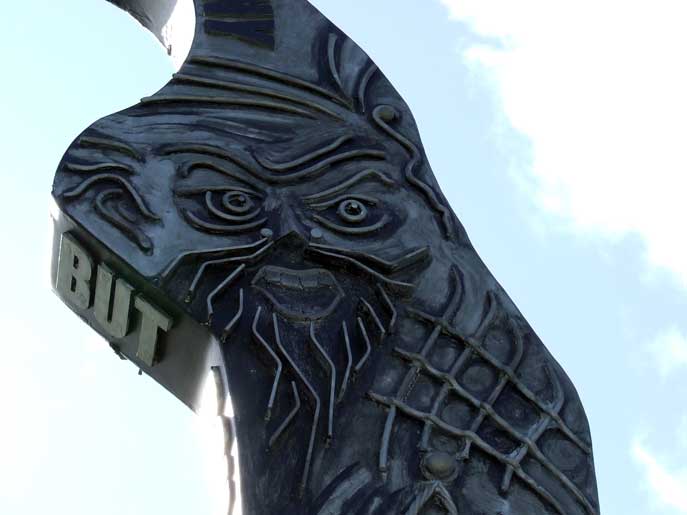 |
There's carvings like this all over the monument |
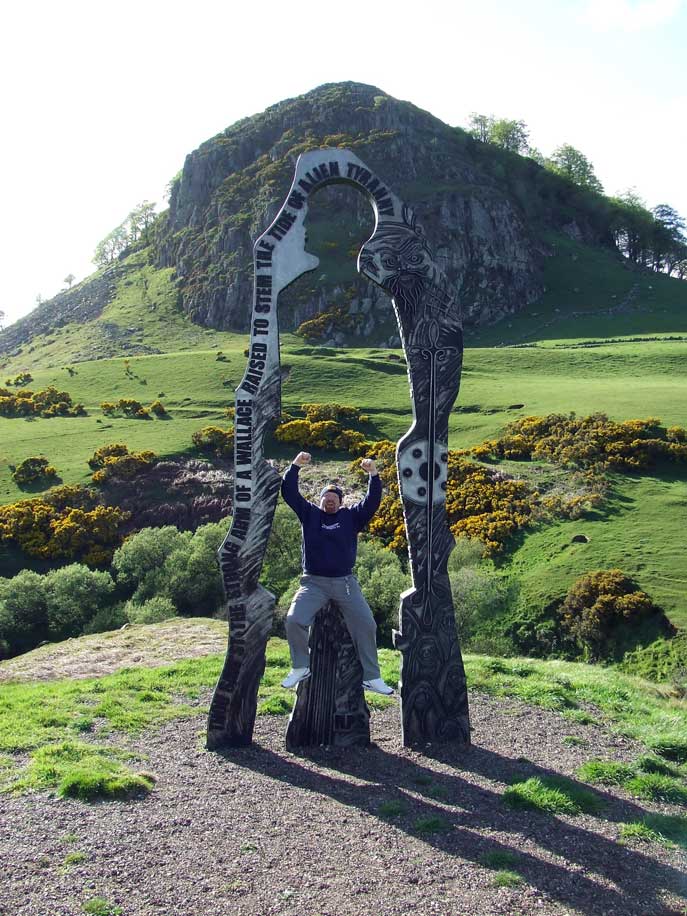 |
George sits on the monument to give you some idea of the size of this structure |
For higher resolution copies of these photos CLICK HERE |
| © Society of William Wallace 2007-2025 | The Society of William Wallace is a Scottish Charitable Incorporated Organisation Registration number SC045959 |
